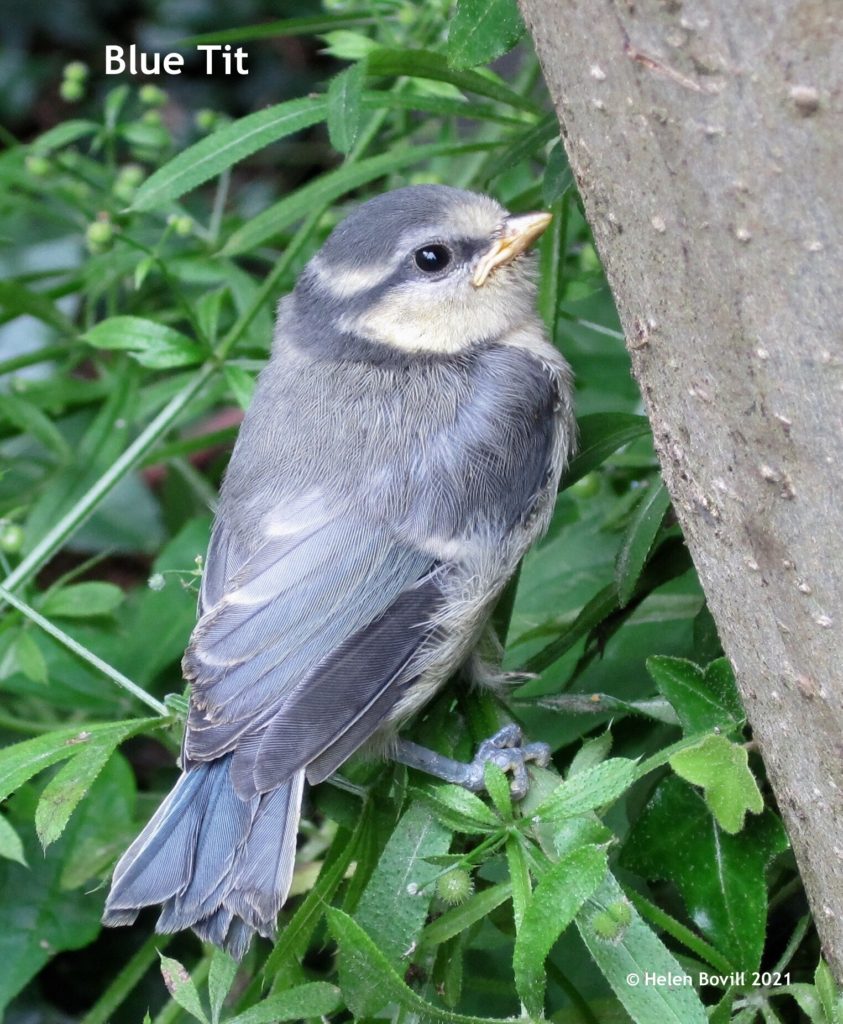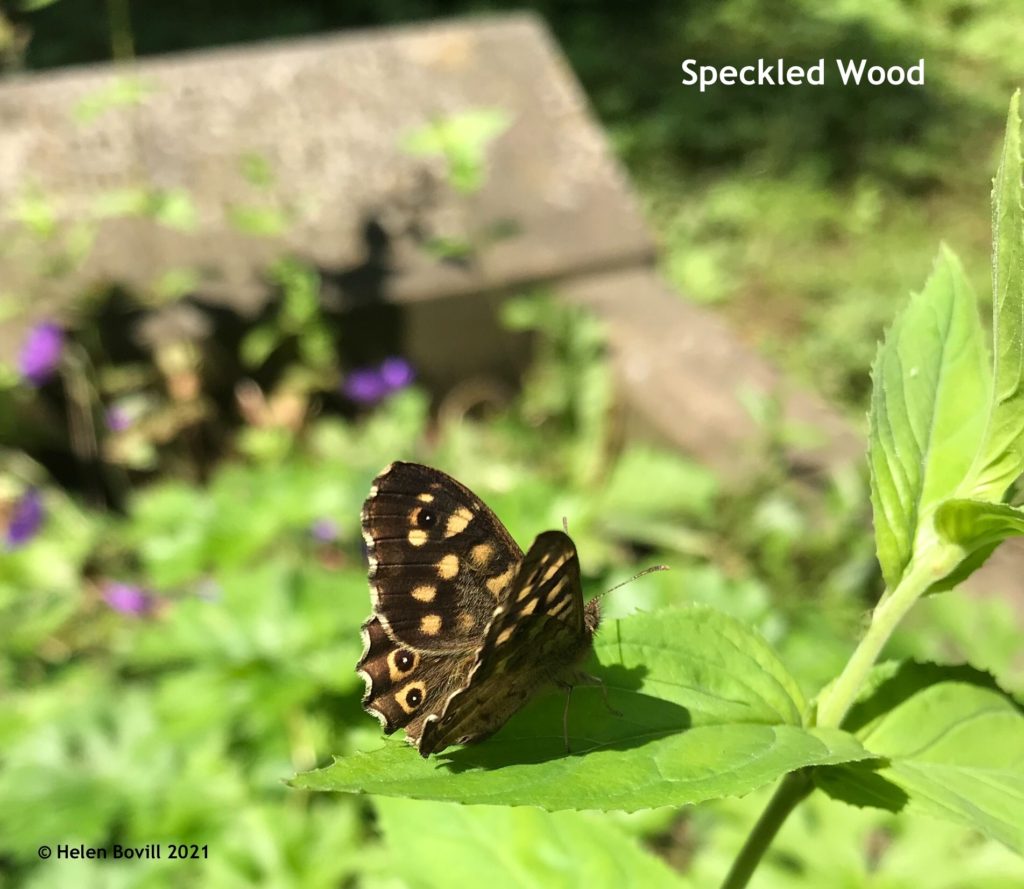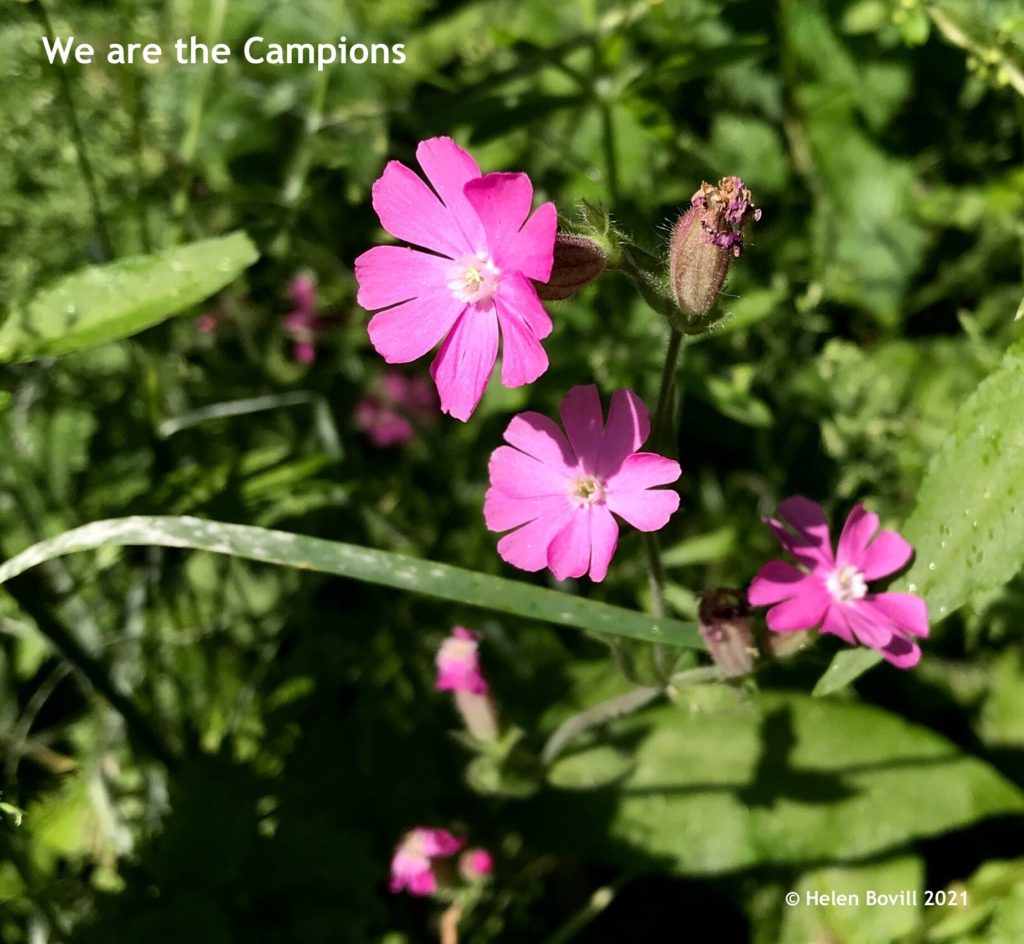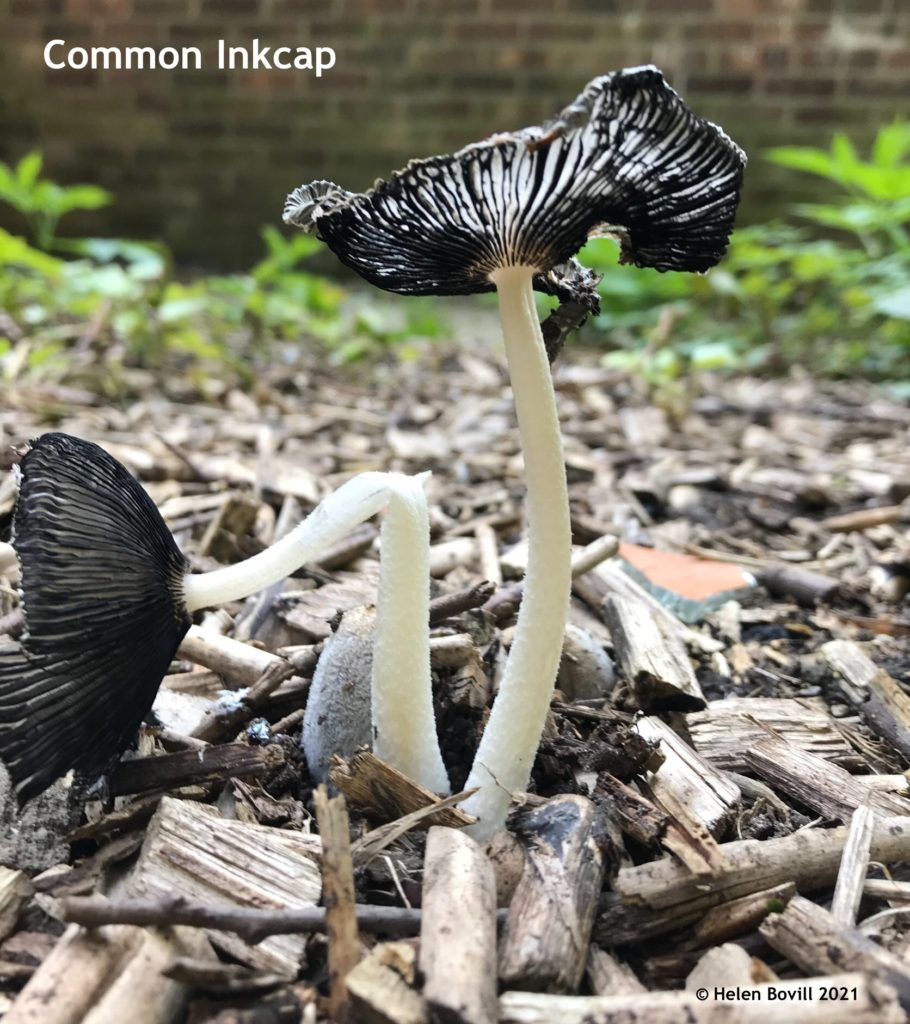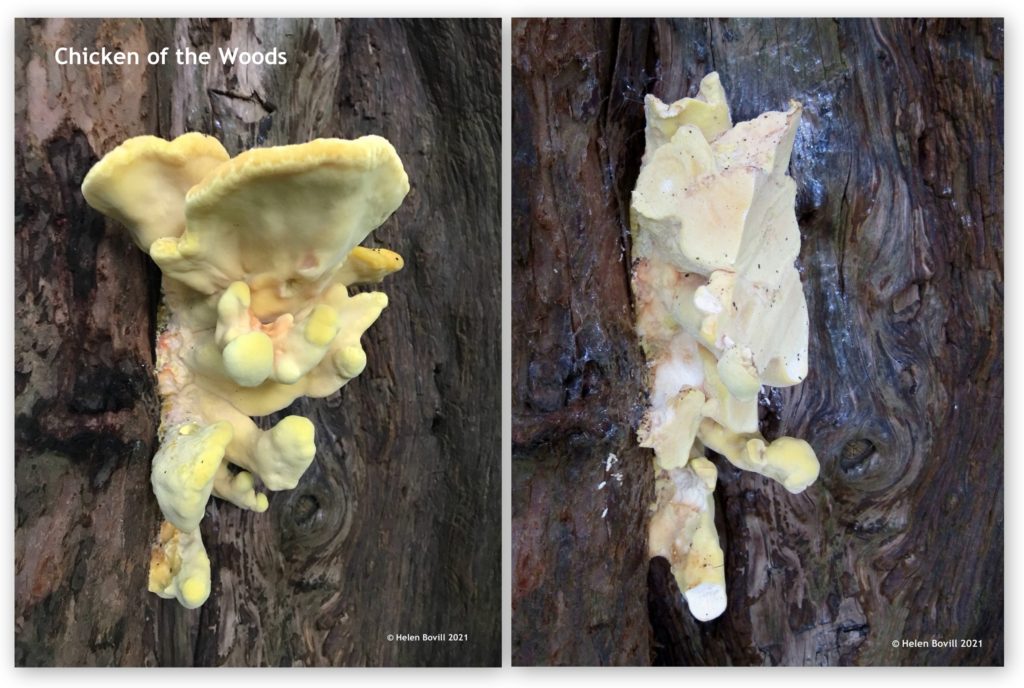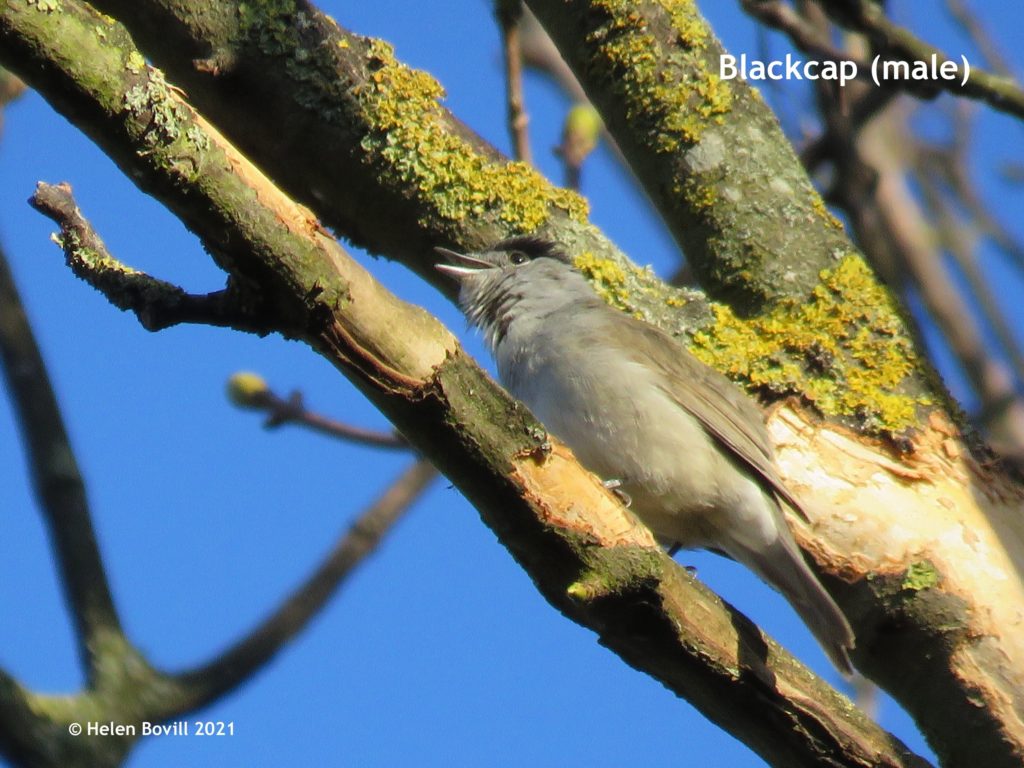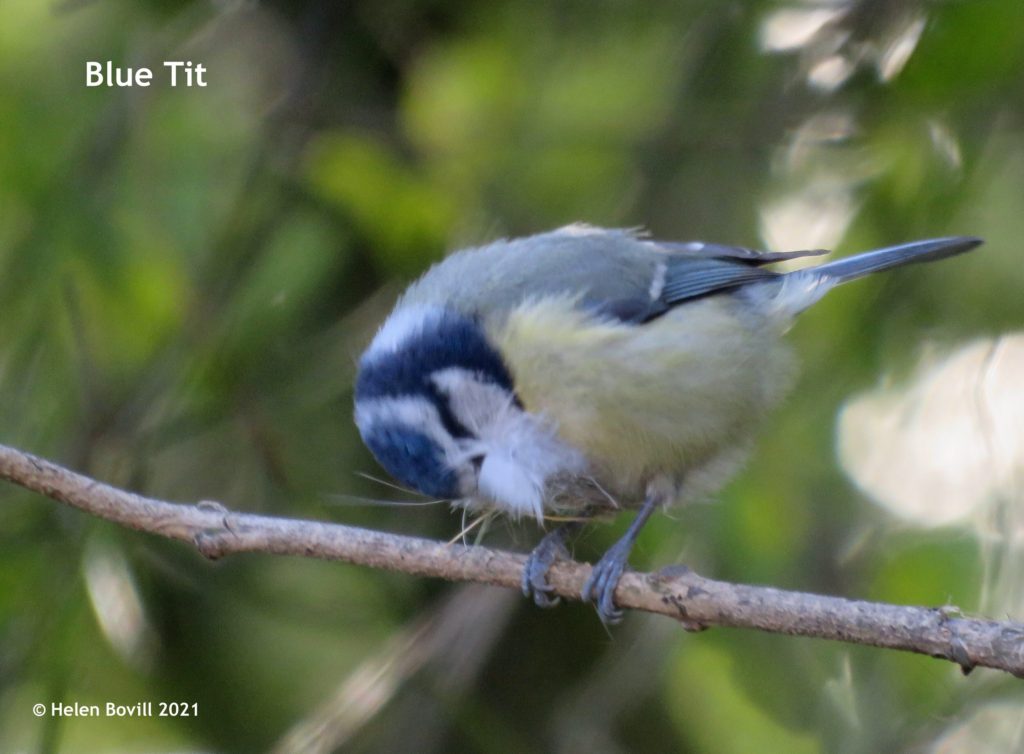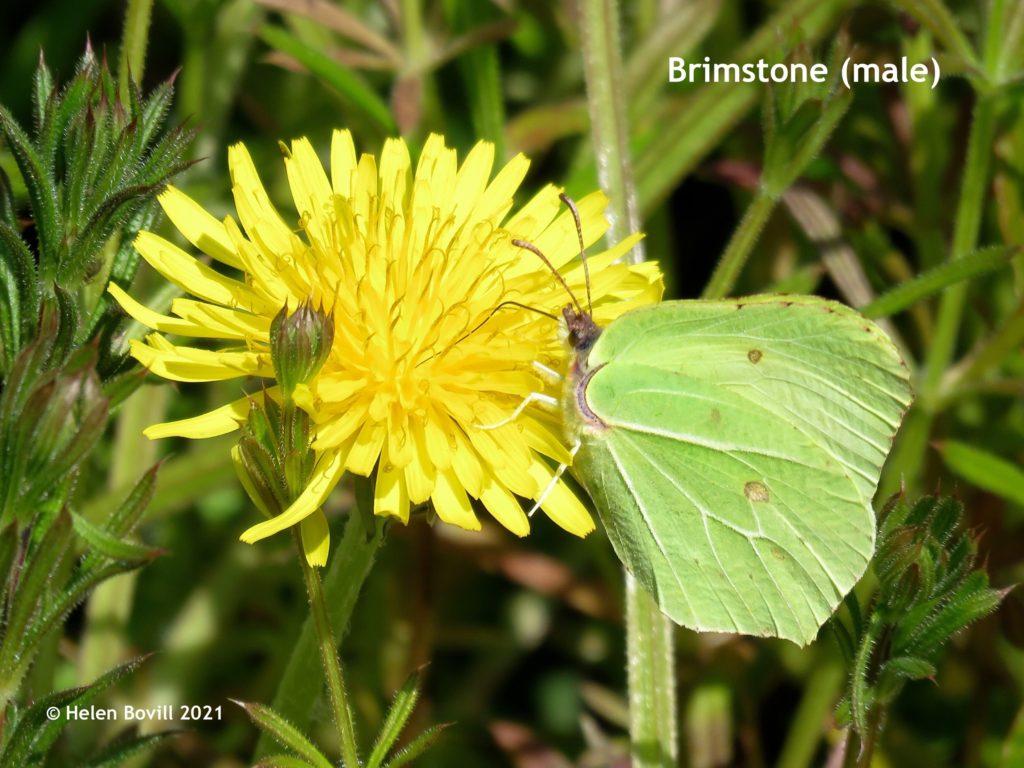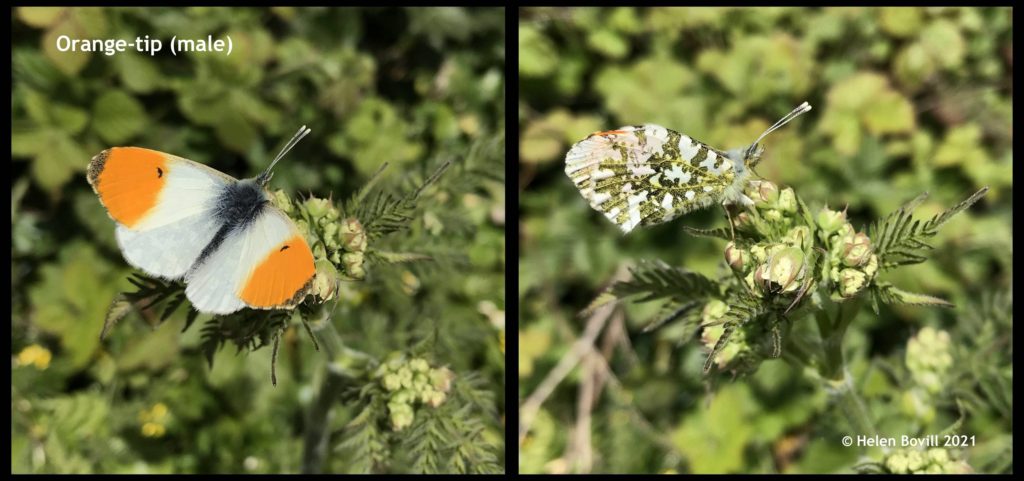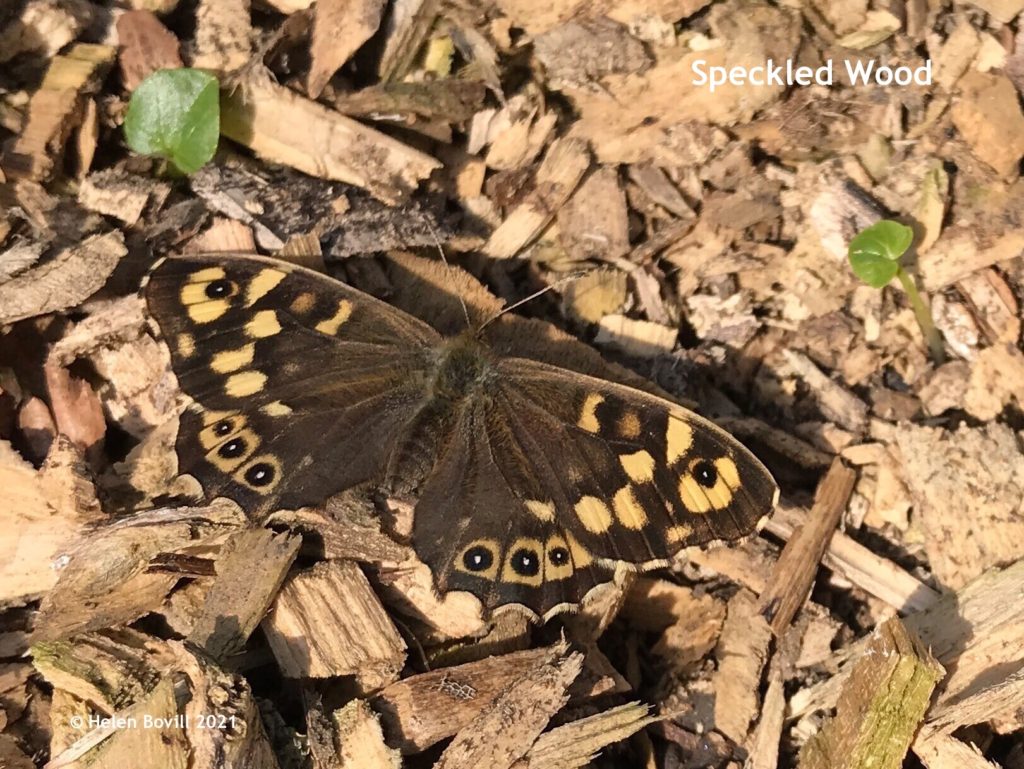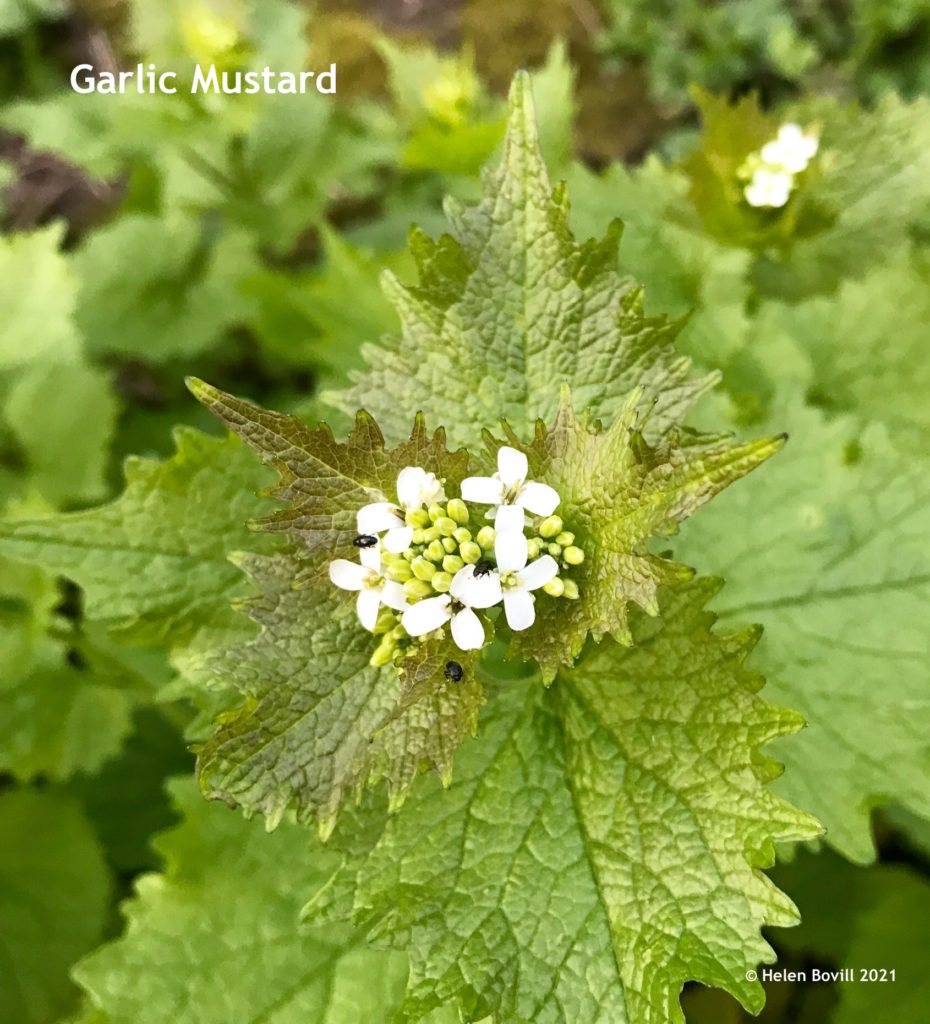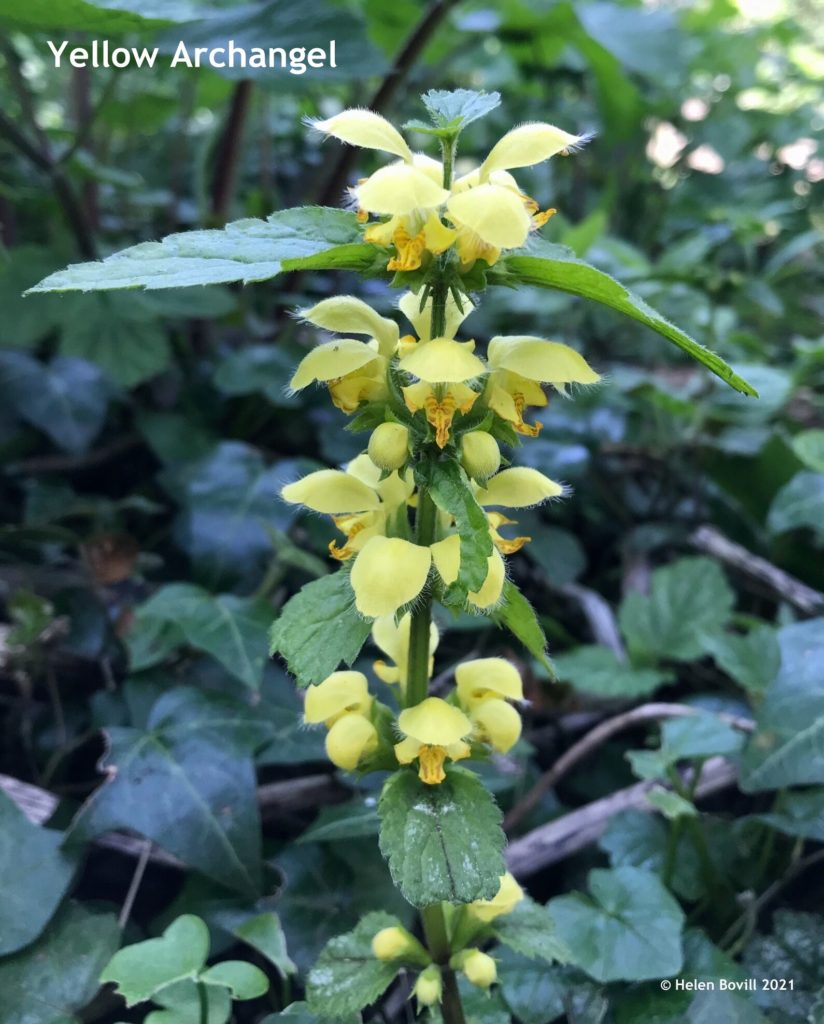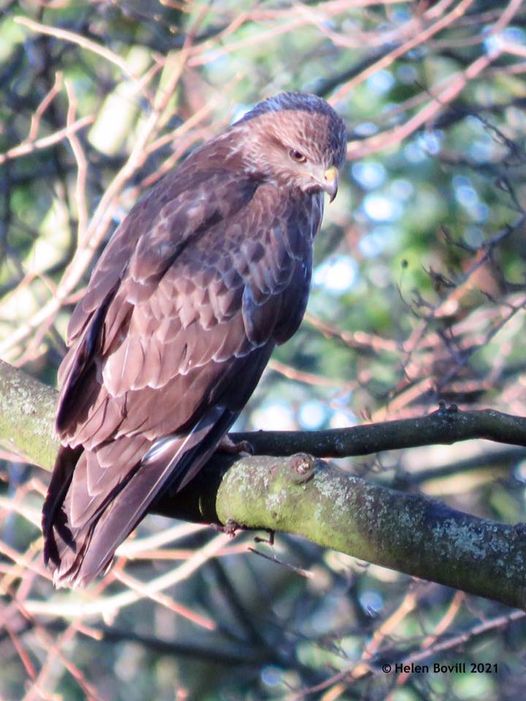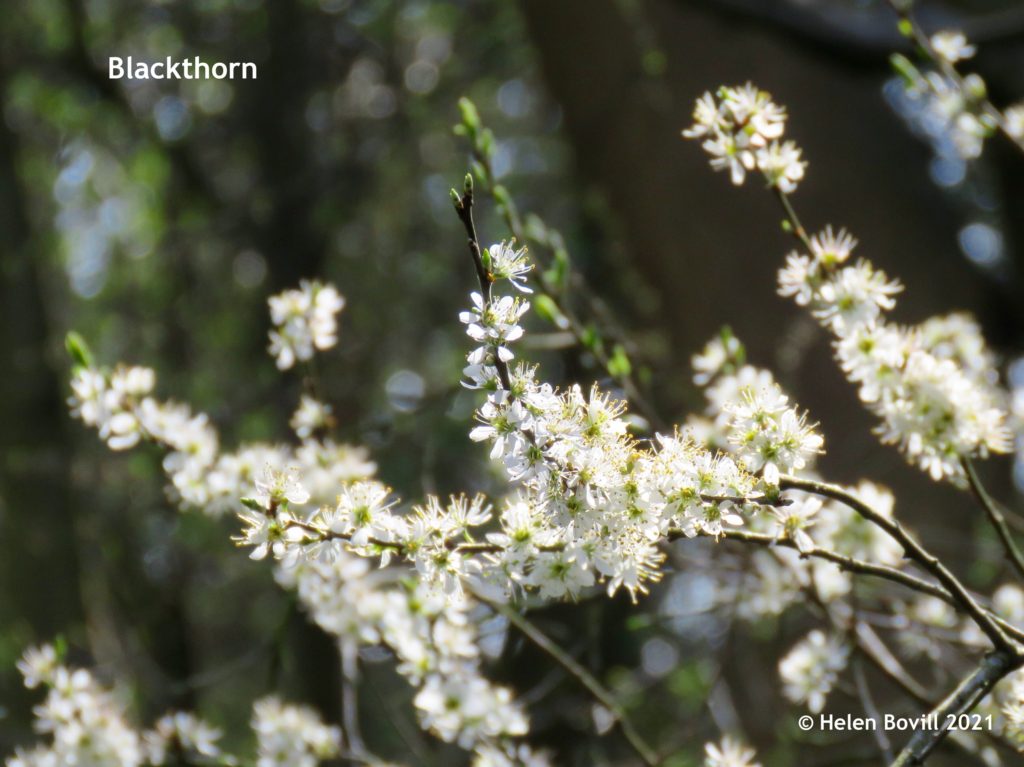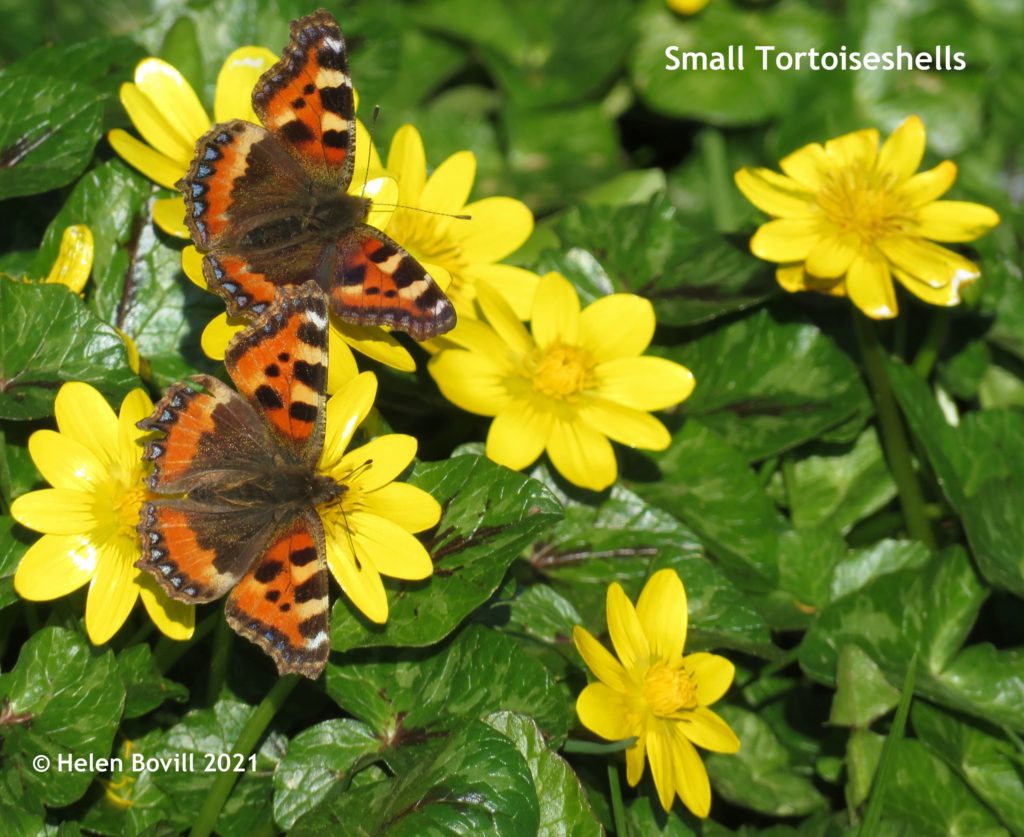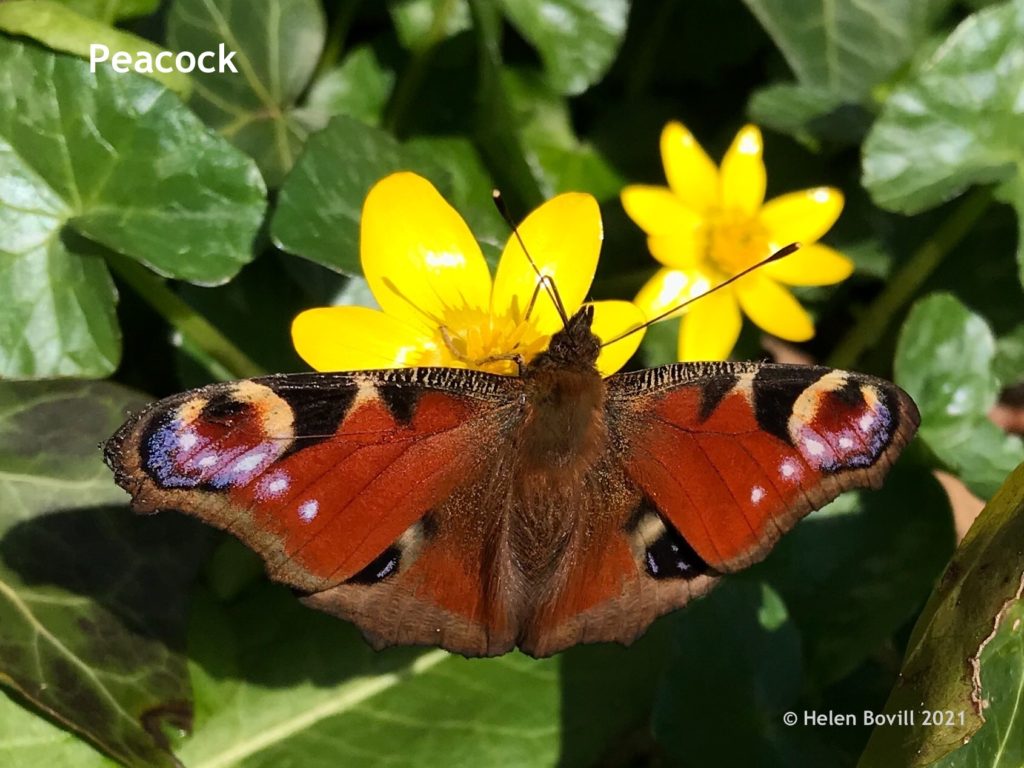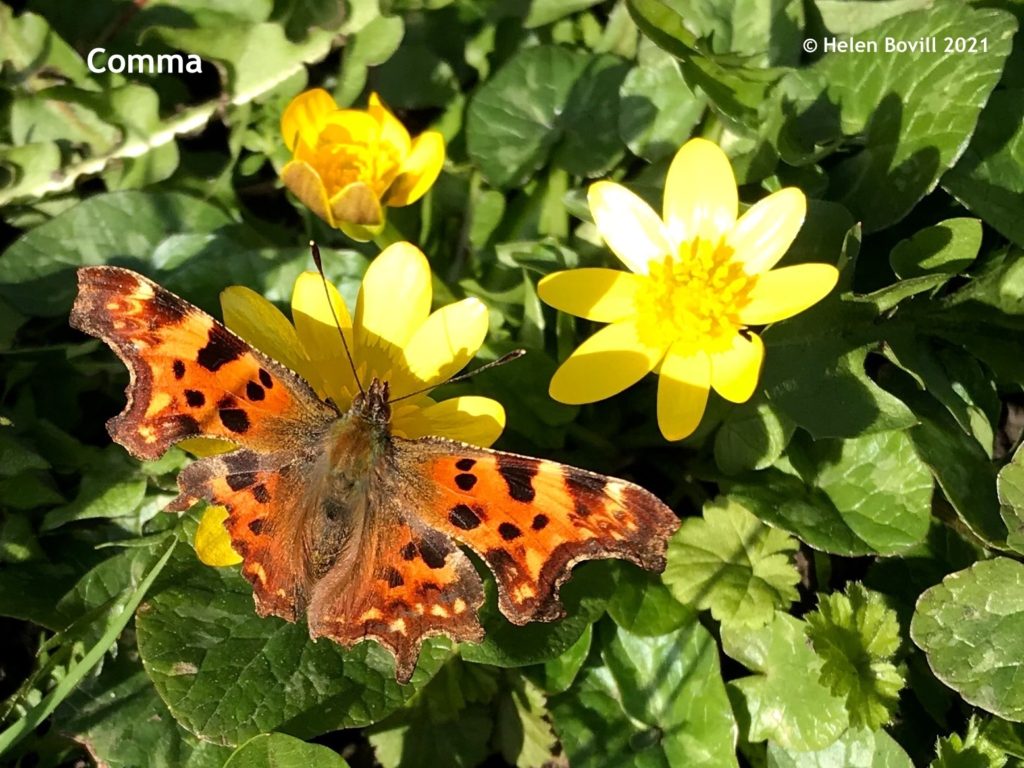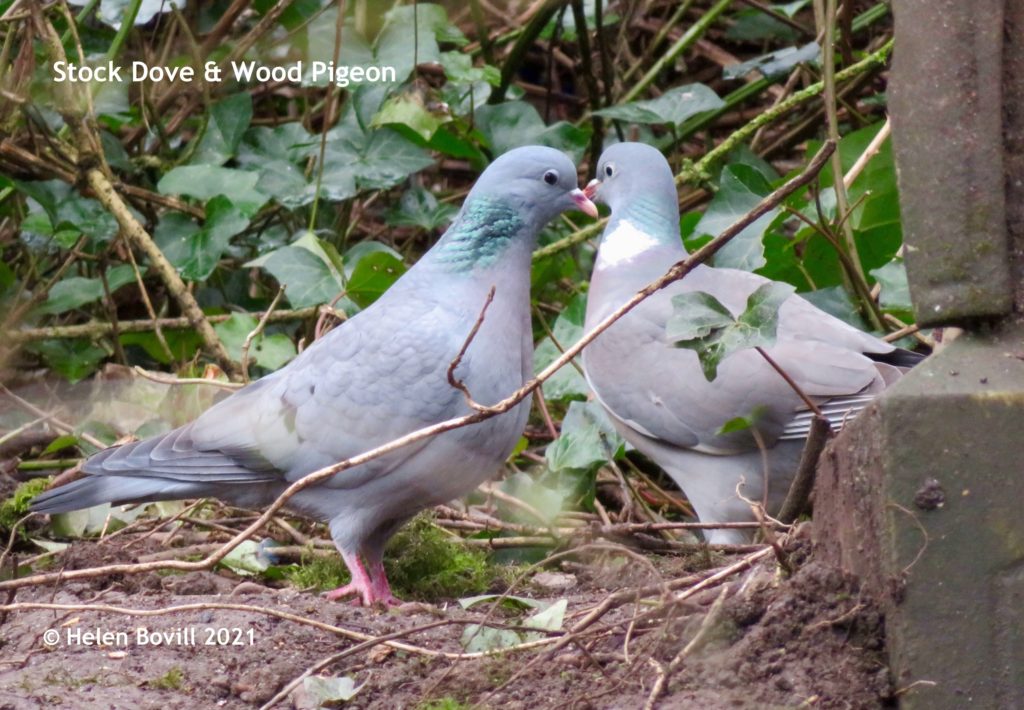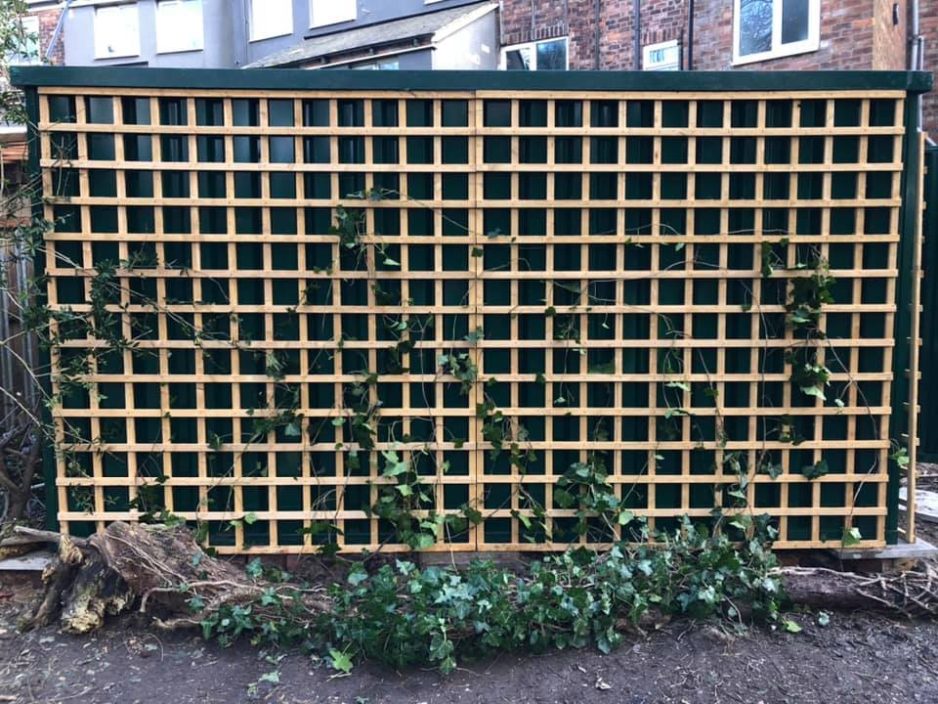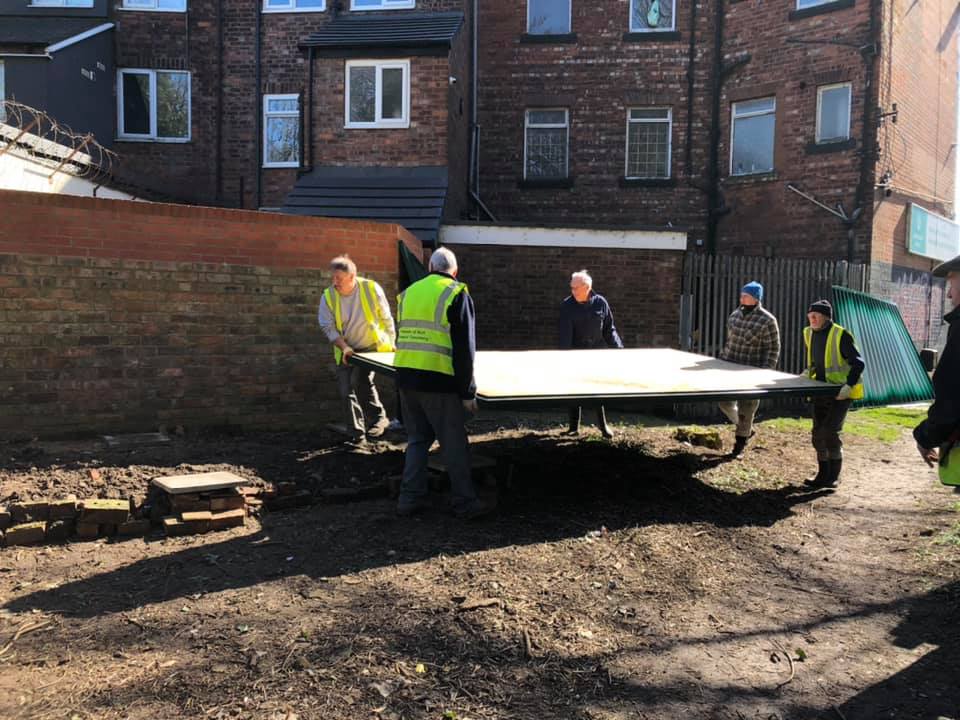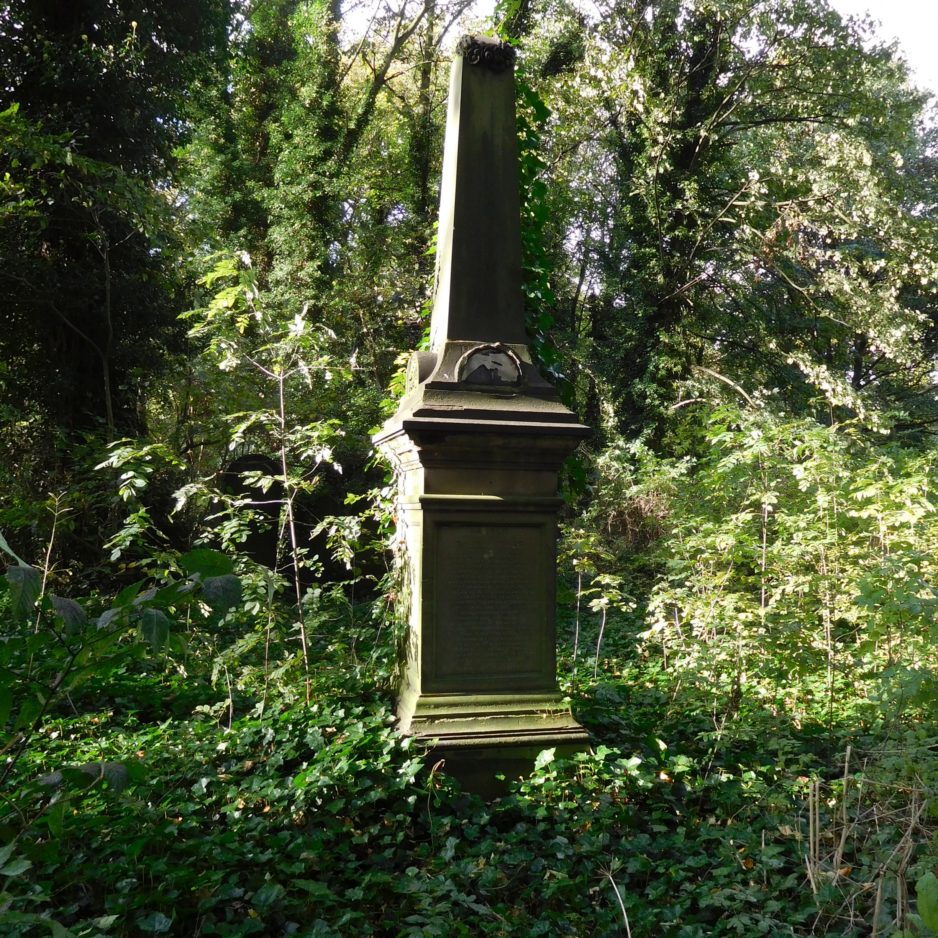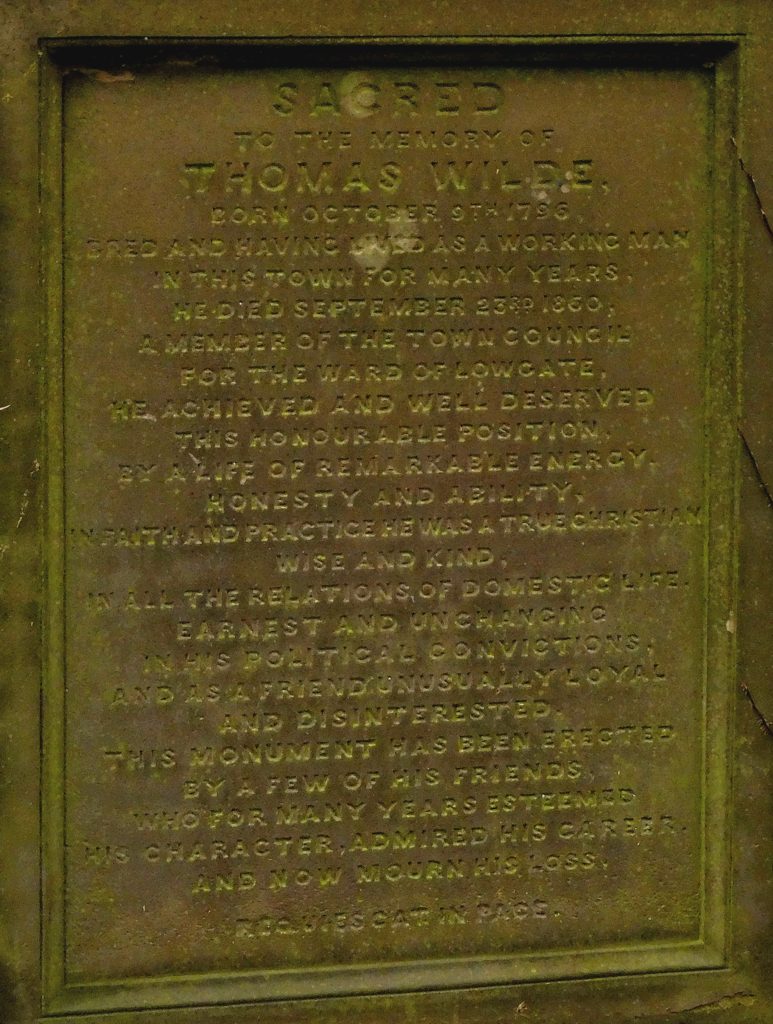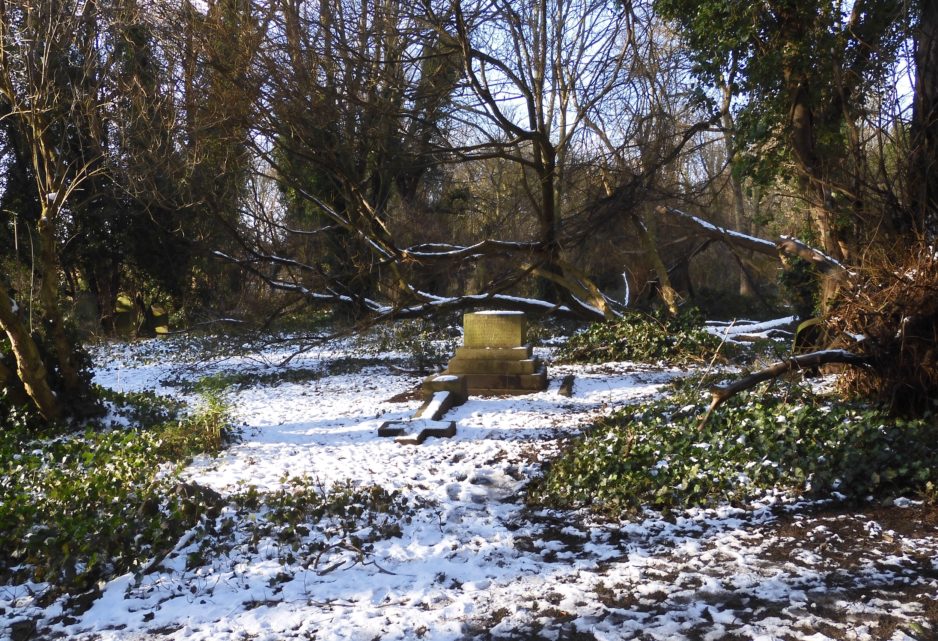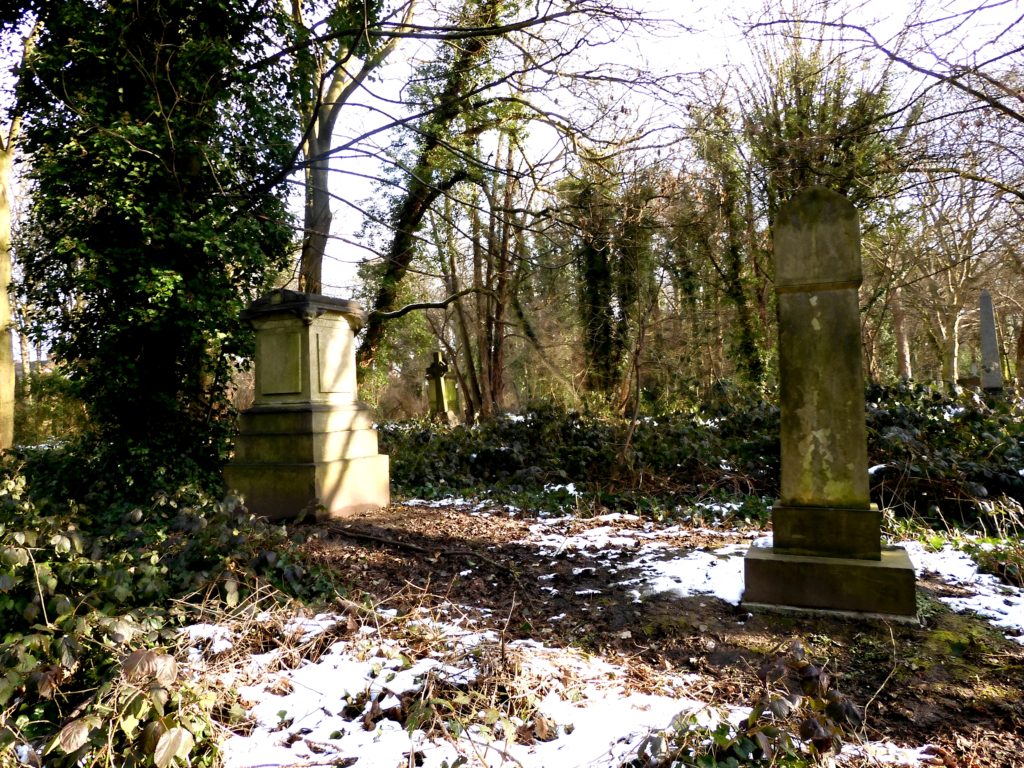The work done by the FOHGC during early spring has continued during the present lock-down period. Obviously the bird nesting season has begun during this particular period so the FOHGC has taken this factor into account in their planned work. The volunteers have been keeping their social distance and taking additional precautions. The work done by the FOHGC during early spring is noted below. The further work that took place in March follows on.
Summary of activities in February
Hull City Council Planning Department have advised us that we do not require planning permission for the storage cabin. The cabin will be ordered in the near future.
The buzzard appeared to have left the site. This was not the case however, and it has since been sighted several times.
The Facebook site continues to grow under the management of Barbara Lowden, and we now over 1000 members!
Pete Lowden continues to add various new facilities onto our website, including past research, news updates etc. This seems to be very popular. Pete is also trying to get guest ‘specialist’ writers to contribute.
The photographic record and the digitising of the burial records
The Photographic Record Project is now complete and transferred onto Access Database. This is complete with a ‘name’ index on Excel Spreadsheet, although the volunteers seem to be finding even more unrecorded stones! Several more previously unrecorded graves have been uncovered by the volunteers. These have been photographed and placed on the database and highlighted as a new find.
Kevin Rudeforth will try to upload the database to the Website. A copy will be available to East Yorkshire Family History Society, the Carnegie Trust and the Hull History Centre.
Eva La Pensee, secretary of the FOHGC, has contacted Philip Hampel, Principal Conservation Officer. Philip’s area of responsibility lies mainly in terms of heritage. He thanked the FOHGC for their work in HGC and said that the digitising of the burial records will be a great resource.
The digitising of the records is ongoing so it is difficult to give a precise figure of how much has been done. The work was divided into five yearly periods. Each volunteer went away with their ‘period’. The entire 20th century is now digitised. The project, although no end date was put forward, will likely be completed early next year. Our partners mentioned above, in terms of the photographic record, will receive a copy of the work.
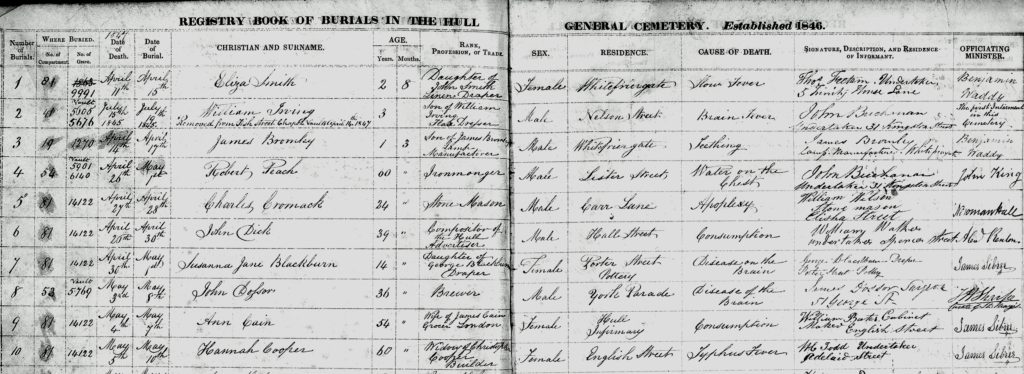
The snowdrops have had a great show this month and the daffodils are now coming into full bloom. Eva La Pensee donated a large number of hawthorn, blackthorn and buckthorn plants. They have all now been planted alongside the Workhouse Area path. All appear to be healthy and well established now.
Meetings
Subsequent to the Zoom meeting, Karen Towner, Helen Bovill and William Longbone met up with Andrew Gibson of Yorkshire Wildlife Trust, the notes of which were circulated.
Jennifer Woollin has emailed copies of the digitized Tree Survey which were circulated.
Karen Towner, Helen Bovill and William Longbone met with Jennifer Woollin on the 2/3/2021. This was to look at the tree survey plans and discuss the planting regimes. I will circulate my notes over the next couple of days.
Two more nesting boxes have been made by volunteer Andy Lister, depicting the names of WW1 and WW2 fallen. These were erected in the central wild flower meadow.
Insurance cover
We understand that the Hull Civic Society have decided not to include FOHGC on their future insurance policy. This is disappointing, as we have had no formal notification or reason from the them for its decision. We will now arrange our own cover by for the coming year.
Vine wires have been fixed on the rear of a building near the demolished chapel. Honeysuckle and ivy have been planted there. It is hope they will conceal the wall.
We are still awaiting the chippings from Hull City Council. The chippings will enable the volunteers to maintain the pathways.
One of the descendants of the cooper on the whaling ship ‘Diana’ has adopted Gravill’s monument and planted it with snowdrops.
Ground ivy
The FOHGC have obtained permission from Jennifer Woollin to remove ground ivy from the wild garlic sites and other localized areas. This includes any gravestones. The wild flower meadow can now be made ready for planting. We are advised this should not adversely affect nesting birds.
We haven’t yet received the accounts, but there have been no outgoings this month, except for the £10 subscription to the National Association of Cemetery Friends.
There is an area at the rear of the cemetery near the wildflower meadow. Many damaged kerb stones have been left there and this area has long been used as a ‘dumping’ ground. It has now has now been tidied and planted with wild flower seeds. The kerbs have been checked for any numbers/inscriptions and recorded.
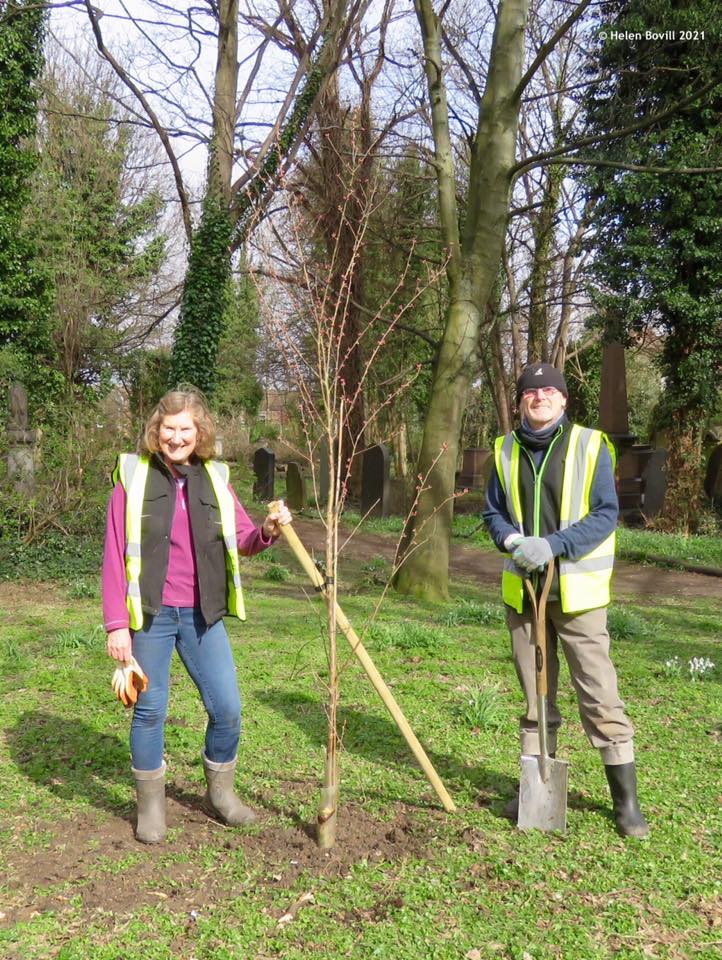
The work done by the FOHGC in March
The volunteers have been extremely busy during the March lock-down period, with the volunteers keeping their social distance and taking additional precautions.
Summary of activities in March
The storage cabin was ordered, delivered and erected in its agreed position at the rear of the Princes Ave shops. Thanks were given to Mike Tindall and Andrew Wilson for their support in obtaining the facility.
It has been fitted with storage and tool racking.
Further donation and more trees
A donation of £250 was received from Messrs Donaldson Filters to enable the group to purchase trees and plants. A further £20 was received from Stuart Johnson.
A flowering cherry was purchased and planted on the SBW verge, it is now in full blossom. In addition, an English oak, 2 silver birch and an alder have been purchased and planted.
We have been notified by the Woodland Trust that the 15 saplings awarded to us will be delivered in the next 3 weeks.
Nature
The snowdrops continued to have a great show this month, the daffodils are in full bloom and the bluebells and wild garlic are now awaiting their turn!
The hawthorn, blackthorn and buckthorn plants donated by Eva, and planted alongside the Workhouse Area all seem to be in bud and flourishing.
Several species of butterflies have been noted in the cemetery by Helen Bovill, particularly on the Spring Bank West frontage.
Many bird species, including blue tits, great tits, tree creepers, chaffinch and goldcrest have been seen in the cemetery this month.
There have been several sightings of the buzzard. We long to see a mate for him / her.
Visit from council officers
Jennifer Woollin and Adam Sivel-Thompson visited the site this month. They agreed that the trees that were adversely affecting the Thomas Stratten tomb and nearby grave can be removed by the volunteers. There are no nesting birds in them.
As agreed with Jennifer Woollin, environmental officer for the council, the volunteers have begun to prepare the wild flower meadow for planting. This should not adversely affect any nesting birds. We have many wildflower seedlings including sunflowers, cornflowers, cowslip etc ready for planting.
Jennifer and Adam Sivel-Thomson, one of Jennifer’s colleagues, were delighted to be shown the Giant Puffballs and Scarlet Elf Cup fungus. They said this fungus was particularly rare, especially in an urban environment.

Website and Facebook
Pete Lowden continues to add various new facilities onto our website, including past research, news updates etc. This is very informative and seems to be very popular, Helen Bovill has agreed to submit a monthly ‘nature’ post to the website. Pete is endeavouring to get guest ‘specialist’ writers to contribute.
The Photographic Record Project is now complete and transferred onto Access Database. The volunteers have found several additional headstones. These have been added to the database. Kevin is going to try and upload the database to the Website. A copy will be available to EYFHS, Carnegie Heritage Centre and the Hull History Centre.
The Facebook site continues to grow under the management of Barbara Lowden. We now have over 1070 members!
More discoveries
Captain William Cape died in the Crimea. The previously unknown plaque recording this has recently been unearthed. A frame made to keep it together has been assembled.
The Alder family’s unrecorded grave has been unearthed. This has a stylized Alder tree carved on it. The Friends have purchased an alder tree. In agreement with Jennifer Woollin and Adam Sivel-Thompson, it has now been planted adjacent to the Alder grave.
Insurance and chippings
The Civic Society have decided not to include FOHGC on their future insurance policy. The FOHGC still have had no formal notification or reason from the Civic Society for its decision. Quotations for a new policy to cover the volunteers activities and the cabin/tools etc have been received. The new premium will be approximately £250. Once we have agreement to proceed from the members Bill will organize the policy.
We are still awaiting chippings from HCC to enable the volunteers to maintain the pathways.
The cylindrical ‘granite’ off cuts, donated by Steve Griffin of Odlings Ltd, have been laid into the path near the Main Gate by Pete Lowden. When we receive another delivery, the other side of the path will be completed.
Awaiting accounts and bank statements
We haven’t yet received the accounts from Natasha, nor the bank statement from John Scotney, chair of the FOHGC. There has been quite a lot of expenditure this month with the cabin, trees etc. Bill Longbone has laid out the money and anticipates a cheque from Natasha in the near future.
Miscellaneous

After reporting the issue of dumped furniture in the yard of the rear of Princes Ave shops, most of it has now been removed. The volunteers will re-erect the broken fence to secure the property when it has all been cleared

Three signs advising that there is CCTV in the cemetery have been mounted. One is at the Thoresby St edible garden. The Princes Avenue shops has one. Another is near the laurel ‘drug den’.
Jennifer and Adam have confirmed that the volunteers can cut back the laurels as there are no birds nesting in there.
One of the members of the Facebook site purchased four further signs regarding littering. These were affixed prominently in the Thoresby Street cut through. Thank you Eloina.
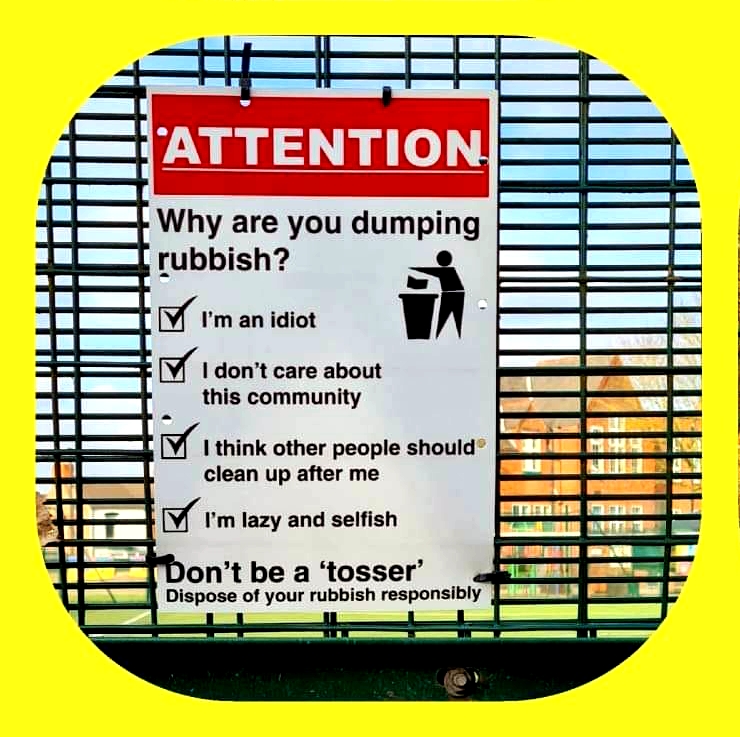
Bill Longbone 26/3/2021
Pete Lowden is a member of the Friends of Hull General Cemetery committee which is committed to reclaiming the cemetery and returning it back to a community resource.
